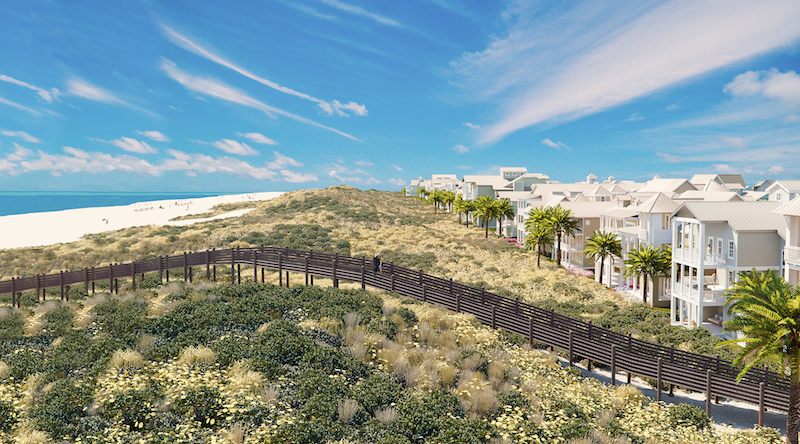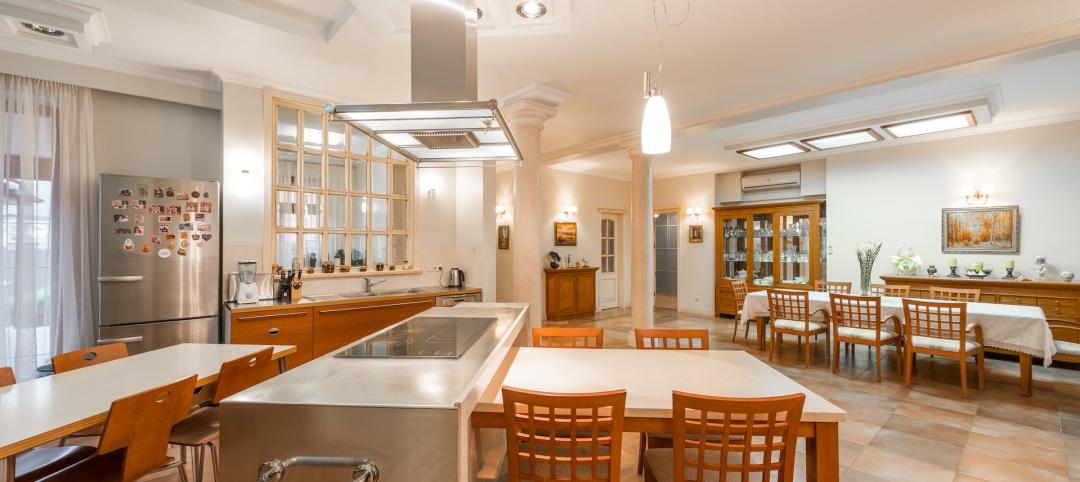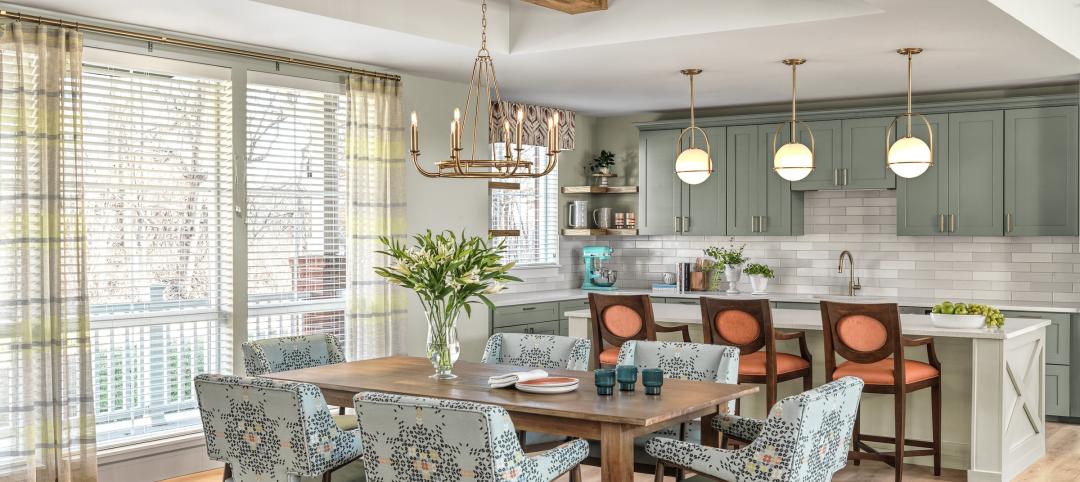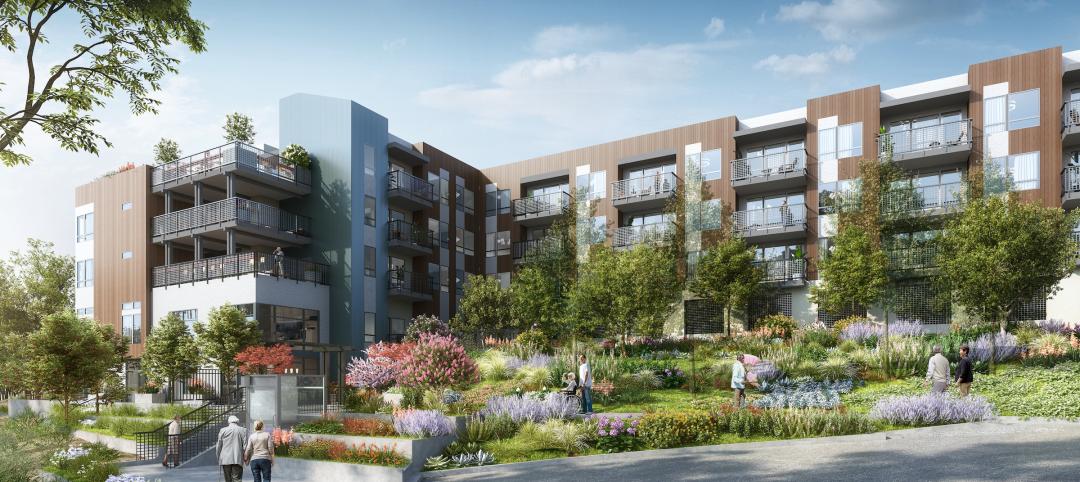Port Aransas is a city on Mustang Island, an 18-mile-long barrier island on the eastern coast of Texas along the Gulf of Mexico, about 180 miles southeast of San Antonio. The city is a fishing, beach, and resort village with 4,000 local residents and five million visitors per year, according to the local Chamber of Commerce. Eco-tourism is one of its economic focuses.
After incurring major damage from Hurricane Harvey in August 2017, Port Aransas has been attracting new development that includes the city’s first conference center, for assemblies of between 500 and 2,000 people, which is scheduled to open in 2021. A 225-key hotel-conference center is slated to break ground next February, as is a new marina/ resort sometime next year.
Port Aransas is also where three upscale mixed-use communities are under development or expansion. These include:
•Cinnamon Shore South—a $1.3 billion, 300-acre subdivision within the 1,000-acre Cinnamon Shore beachfront master planned community—will include luxury homes, Town Center residences, community pools, dining and retail districts, a boutique hotel and a health and wellness center.
•Last June, Palmilla Beach Resort & Golf Community, developed and owned by McCombs Properties, opened a nine-hole golf course, plus a three-hole par-3 course with driving range called The Loop. Palmilla offers condos, townhouses, cottages, and custom homes, starting from the $500s. MPA Austin and Cornerstone Architects are the architects, Schnell Urban Design the design consultant and land planner, and Fortis Homes, Turichhi Builders, Arbogast Home and Pelican Custom Homes the residential contractors.
•Sunflower Beach Resorts & Residences, situated within 50 acres of protected dune reserves, has nearly completed its first phase of The Camp, consisting of 25 luxury one- and two-bedroom cabins priced from $382,000 to $499,000. The community itself features beach homes, 21 single-level poolside condos, and several buildable lots. The Camp’s developers are BMG Wonderland and Legacy DCS.
Sea Oats Group is the developer of Cinnamon Shore. Its CEO, Jeff Lamkin, tells BD+C that the first phase of Cinnamon Shore South, which broke ground a year ago, has eight of the first 20 homes under construction. The build-out of Cinnamon Shore South is expected to encompass around 1,000 housing units, and take between 15 and 20 years to complete.
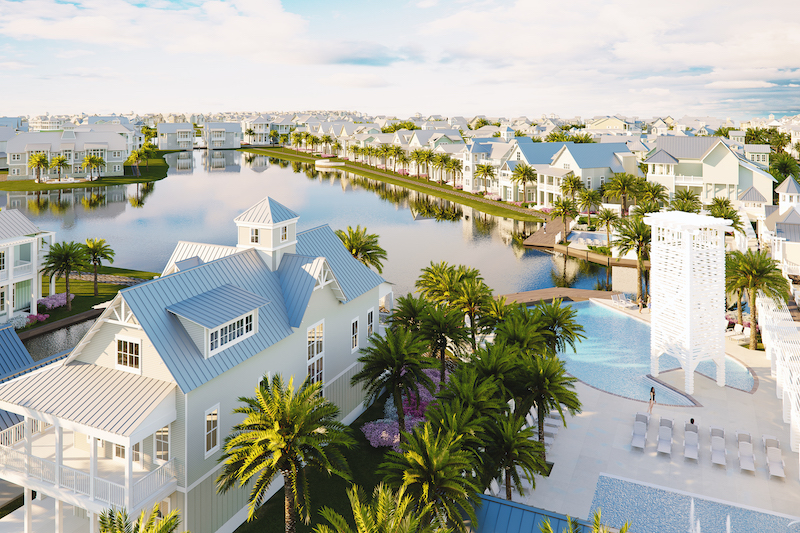
The houses under construction at Cinnamon Shore South are all elevated and built to resist flooding and high winds.
The elevations of all of the buildings in this subdivision will be 10 to 11 feet above sea level. Lamkin says the street is 6½ feet above, and the buildings will sit on leakproof elevated slabs over sand fill that’s another 4½ feet above street level.
The Texas Gulf Coast is perennially susceptible to high winds. Lamkin says that for resilience, the houses at Cinnamon Shore South will include bolts placed every 18 inches around the perimeter that secure the roof to the foundation. The houses’ windows can resist winds up to 140 miles per hour. Sea Oats is specifying 32-gauge aluminum roofing, Azek decking, and Hardiplank siding. The community was designed so there’s not a lot of debris when winds kick up.
(Cinnamon Shore South’s building team includes Kissling Architecture and the Waggoner Custom Homes.)
Lamkin says that before Sea Oats considers developing beachfront property, it compares old and new shoreline imagery to determine accretion, stability, and erosion. It also looks at the post-storm durability of the property’s dune system; Cinnamon Shore’s dunes are between 14 and 30 ft high, and 300 ft wide, he says.
Lamkin calculates that resilience can double the cost of construction for coastal projects. Sea Oats spent $600,000 alone to build a dune crossover to the community’s golf course.
But Port Aransas’ marketing pitch is that it offers luxury living at a bargain compared to similar homes and communities in coastal Florida or California. Fifty-foot Gulf-front lots there are still selling for under $1 million, versus $4 million to $5 million in Florida or California. “Coastal homes in Texas might sell for $3 million, compared to $9 million in Florida and $12 million in California, mostly because the cost of land,” Lamkin explains.
When asked why it took so long for developers to leap into beachfront property like Port Aransas, Lamkin—whose company started the 63-acre Cinnamon Shore North in 2007—says that Texas’ economy has shifted from depending on gas and oil for 70% of its tax revenue in the 1980s, to where that sector contributes only about 20% today. Other sectors, like tourism and entertainment, have been picking up the slack.
It hasn’t hurt, either, that the housing market in Texas is still relatively inexpensive, vis a vis other markets on the east and west coast. And Texas led all states in terms of seasonally adjusted annual job growth by adding 323,000 jobs from July 2018 to July 2019, according to the Texas Workforce Commission. These factors have driven Texas’ population to exceed 29 million, from 25.1 million in 2010.
Related Stories
Mixed-Use | Jan 29, 2024
12 U.S. markets where entertainment districts are under consideration or construction
The Pomp, a 223-acre district located 10 miles north of Fort Lauderdale, Fla., and The Armory, a 225,000-sf dining and entertainment venue on six acres in St Louis, are among the top entertainment districts in the works across the U.S.
Sponsored | BD+C University Course | Jan 17, 2024
Waterproofing deep foundations for new construction
This continuing education course, by Walter P Moore's Amos Chan, P.E., BECxP, CxA+BE, covers design considerations for below-grade waterproofing for new construction, the types of below-grade systems available, and specific concerns associated with waterproofing deep foundations.
Multifamily Housing | Jan 15, 2024
Multifamily rent growth rate unchanged at 0.3%
The National Multifamily Report by Yardi Matrix highlights the highs and lows of the multifamily market in 2023. Despite strong demand, rent growth remained unchanged at 0.3 percent.
Adaptive Reuse | Jan 12, 2024
Office-to-residential conversions put pressure on curbside management and parking
With many office and commercial buildings being converted to residential use, two important issues—curbside management and parking—are sometimes not given their due attention. Cities need to assess how vehicle storage, bike and bus lanes, and drop-off zones in front of buildings may need to change because of office-to-residential conversions.
MFPRO+ News | Jan 12, 2024
Detroit may tax land more than buildings to spur development of vacant sites
The City of Detroit is considering a revamp of how it taxes property to encourage development of more vacant lots. The land-value tax has rarely been tried in the U.S., but versions of it have been adopted in many other countries.
MFPRO+ News | Jan 12, 2024
As demand rises for EV chargers at multifamily housing properties, options and incentives multiply
As electric vehicle sales continue to increase, more renters are looking for apartments that offer charging options.
Sustainability | Jan 10, 2024
New passive house partnership allows lower cost financing for developers
The new partnership between PACE Equity and Phius allows commercial passive house projects to be automatically eligible for CIRRUS Low Carbon financing.
Giants 400 | Jan 8, 2024
Top 60 Senior Living Facility Construction Firms for 2023
Whiting-Turner, Ryan Companies US, Weis Builders, Suffolk Construction, and W.E. O'Neil Construction top BD+C's ranking of the nation's largest senior living facility general contractors and construction management (CM) firms for 2023, as reported in the 2023 Giants 400 Report.
Giants 400 | Jan 8, 2024
Top 40 Senior Living Facility Engineering Firms for 2023
Kimley-Horn, Olsson, Tetra Tech, EXP, and IMEG head BD+C's ranking of the nation's largest senior living facility engineering and engineering/architecture (EA) firms for 2023, as reported in the 2023 Giants 400 Report.
Giants 400 | Jan 8, 2024
Top 80 Senior Living Facility Architecture Firms for 2023
Perkins Eastman, Hord Coplan Macht, Lantz-Boggio Architects, Ryan Companies US, and Moseley Architects top BD+C's ranking of the nation's largest senior living facility architecture and architecture engineering (AE) firms for 2023, as reported in the 2023 Giants 400 Report.


